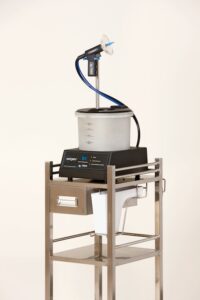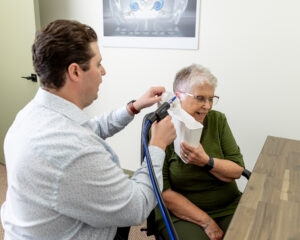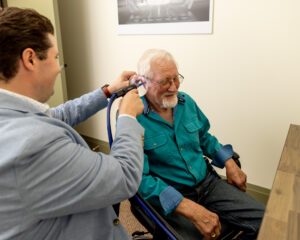
Earwax, or cerumen, is naturally made by glands in your ears to keep the ear canals lubricated and to help block dust and debris from reaching deeper inside.
Earwax usually moves out of the ear on its own through chewing and jaw movements, but sometimes it can build up and cause a blockage, especially if you wear earmolds or hearing aids.

Symptoms of a cerumen blockage include:
-
- Earache
- Tinnitus (ringing of the ears)
- Decreased hearing
- Feeling of ear fullness
- Dizziness
Removal at Your Hearing Provider’s Office with Earigator™
 If the earwax blockage is more significant, it may need to be removed at your hearing care professional’s office.
If the earwax blockage is more significant, it may need to be removed at your hearing care professional’s office.
Irrigation is the most common method your hearing specialist will use to remove blockages. The Earigator™ Cerumen Management System was designed by an otologist to be a safe and highly effective earwax removal method. The irrigation system carefully controls the water flow and temperature, while allowing the professional to see into your ear for effective and painless removal of excess wax.

Dimos is experienced, trusted, and certified in safe and effective earwax removal. He uses a range of techniques, including the advanced Earigator system, to ensure thorough cleaning with maximum comfort. By using the latest and most advanced equipment, we are committed to delivering the highest standard of care.
Earwax Removal Methods to Avoid
Many people use cotton swabs to remove earwax or clear a blockage, but this can actually make things worse. Swabs often push the wax deeper into the ear canal, which can lead to more serious problems or damage. Cotton swabs themselves can also be accidentally inserted too far into the ear canal and can compact wax further or even puncture your eardrum.
Hearing healthcare professionals generally agree that cotton swabs are a bad idea for removing earwax and should only be used to clean the outer portions of your ear. You should never insert cotton swabs or any small object into your ear canal.
If you experience pain or discomfort as a result of earwax or suspect you have a blockage, it’s important that you see your hearing professional as soon as possible to address the issue. Removing earwax doesn’t have to be uncomfortable and should bring you relief.